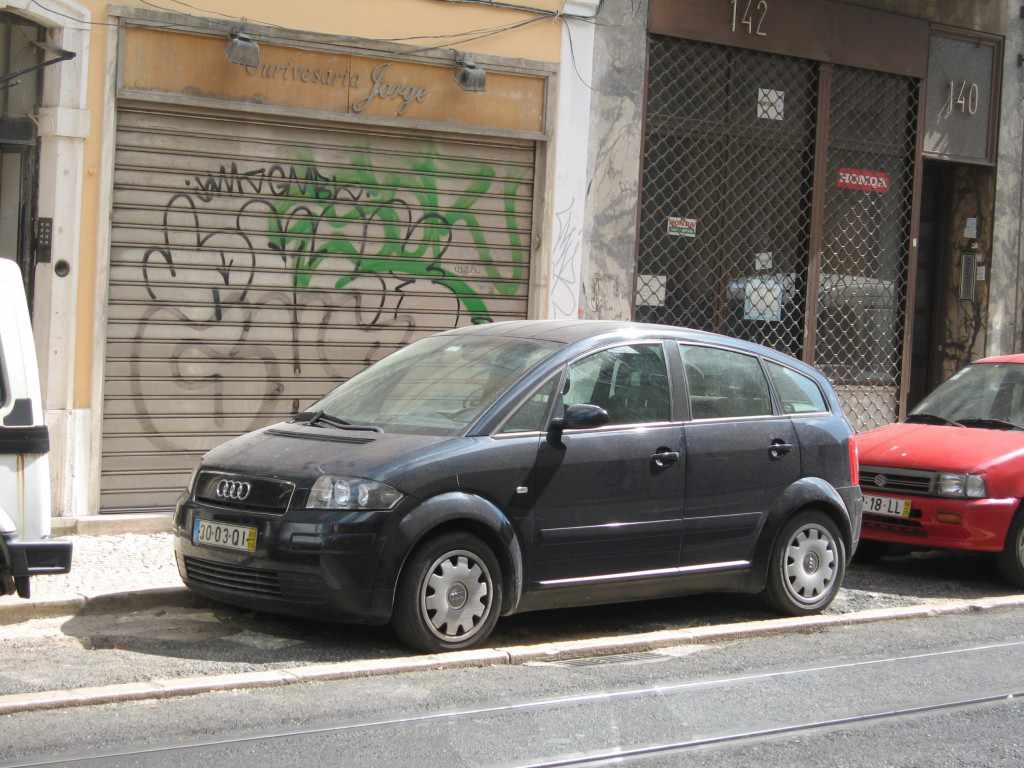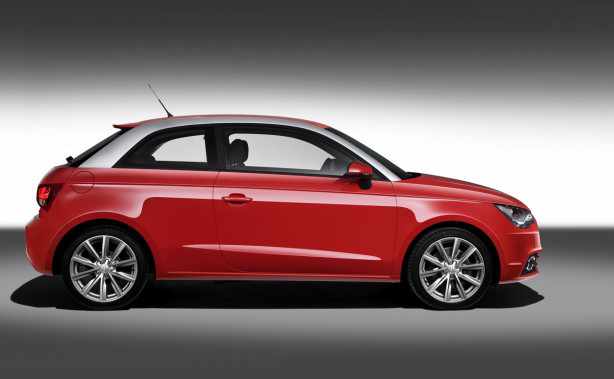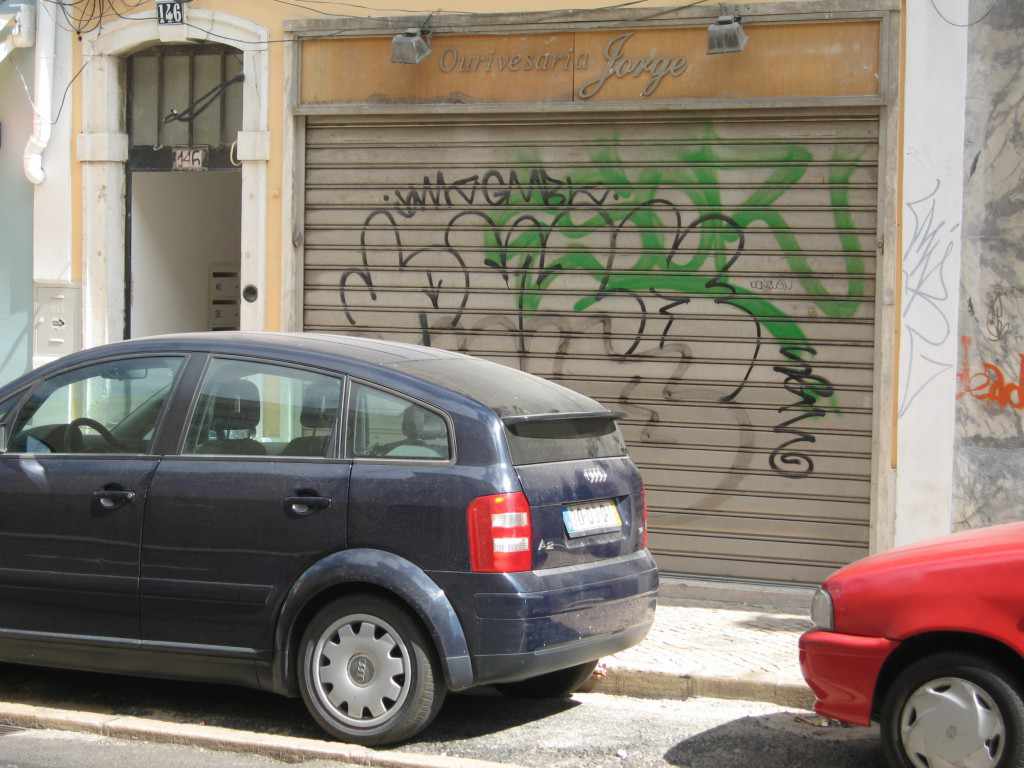
Twelve years is a long time for people, but for cars it’s a coon’s age. In other words, it’s about two car-lifetimes. Just for some perspective, 12 years ago, there was no Google, no Facebook, YouTube, iPod, nor iPhone. The .com bubble had peaked but most people didn’t know it yet and many were buying basement-fulls of Spam and mobile generators in preparation of the impending Y2K crisis. In the automotive world, 12 years ago, “hybrid” wasn’t in our vocabulary, the Diablo was littering magazine covers, the Ferrari 360 Modena was just peeking its nose out of the Maranellan womb, the McLaren F1 had stopped production despite building only a third of the 300 projected cars, and Audi released a premium compact car built largely of aluminum. Now of all those cars I just mentioned, I want to focus on that last one. This aluminum-framed and bodied car was designed by Luc Donckerwolke and it was called the A2, slotting beneath the A3 in the Audi range. Which Luc Donckerwolke? Ah, that would be the Belgian one who also picked up a pen and paper for Lamborghini. The Luc I’m talking about designed the aforementioned Diablo, the Murcielago, and the Gallardo. So while the A2 might seem like a plain-Jane runabout or even a dilution of four-ringed brand equity, in reality, it was anything but. Unfortunately, the market couldn’t get past the steep price tag directly resulting from all that innovative (and expensive) aluminum. As a result, sales were weak. Which is odd because even at, say, CDN$35,000, the Audi A2 was a tenth the cost of Donckerwolke’s other works of art – and that made it a bargain.
Now, 12 years after launching the Audi A2, the company that lit the unintended acceleration torch that Toyota now carries is launching another premium compact for the European market: the Audi A1. The A1 could make it to our frosty shores if there were enough interest, but really, you don’t want one. If you can wait until 2014, I think I can convince you that what you really want is a then-to-be-15-year-old Audi A2. What makes me so bullish and sanguine? It’s all in the details.
If you’re accustomed to Audi’s naming system, you’ll know that the larger the integer following the “A”, the larger the vehicle. So let’s start with some dimensions: the Audi A1 is 3.95m in length, the Audi A2 is 3.82m. Ok, that’s kind of weird. What about width? 1.74m for the A1 and 1.67m for the A2. So far, the more “compact” A1 is longer and wider than the A2. So much for Audi’s nomenclature. Height for the A1 is 1.42m and the A2 is 1.55m tall. So the A1 wins the height, right? Wrong. We’re not talking about supercars, where it’s more aerodynamically efficient to be lower to the ground, we’re talking about city runabouts that will hit 100 kph if they’re lucky. With the A2’s taller height, it boasts greater storage space in the trunk with the seats up or down (A1: 267L/920L, A2: 390L/1085L). With city cars, it’s all about packaging. Chalk one up for the A2.
Also, despite the increased height of the A2 versus the A1, the A2 was actually the slipperier (if that’s a word) of the two, with a drag coefficient of 0.28 against 0.32 for the A1. Chalk another up for the A2. The A2’s aerodynamic efficiency and weight of only 895kg (1975lbs), meant that it could achieve 4.2L/100km on the highway from its 75hp 3-pot diesel engine. That made the A2 one of the most fuel efficient cars on that road in the late 20th century, and would still be considered a miser in today’s ecofanatical social climate. With the A1, I will concede that Audi has moved the game on with its engine technology, mainly because the most fuel-efficient engine, a 1.6L TDI, makes 90hp and gets 3.8L/100km. I suppose Audi had to be researching and developing something for the last 12 years.
The Audi A2 was a daring foray into the premium compact class, years ahead of anything else even half as revolutionary. The A2 never gained mainstream acceptance due to its ill-timed and premature focus on fuel-efficiency over sports car pretensions. In a way, Toyota is currently carrying another of Audi’s torches with their Prius, for a grand total of two torches from Audi. Who knew that the Japanese were so interested in following the lead of the Germans?
The diminutive A2 is therefore relegated to the history books as an innovative, if misunderstood and overly expensive, experiment from a company that is currently “innovating” by creating fictional market niches (the A5 Sportback being the worst offender) and installing LED lights onto every car coming off its assembly lines. The Audi A1 offers nothing particularly innovative or special, just a premium badge on a poorly-packaged and mundane appliance. Come 2014, you can bet your bottom dollar that I’ll be importing a left-hand-drive 1999 A2 from continental Europe. My most difficult choice won’t be between the A1 and the A2, it will be whether to get my A2 with a gas engine or a diesel.
[Photo credits: author (1, 3), Audi]


